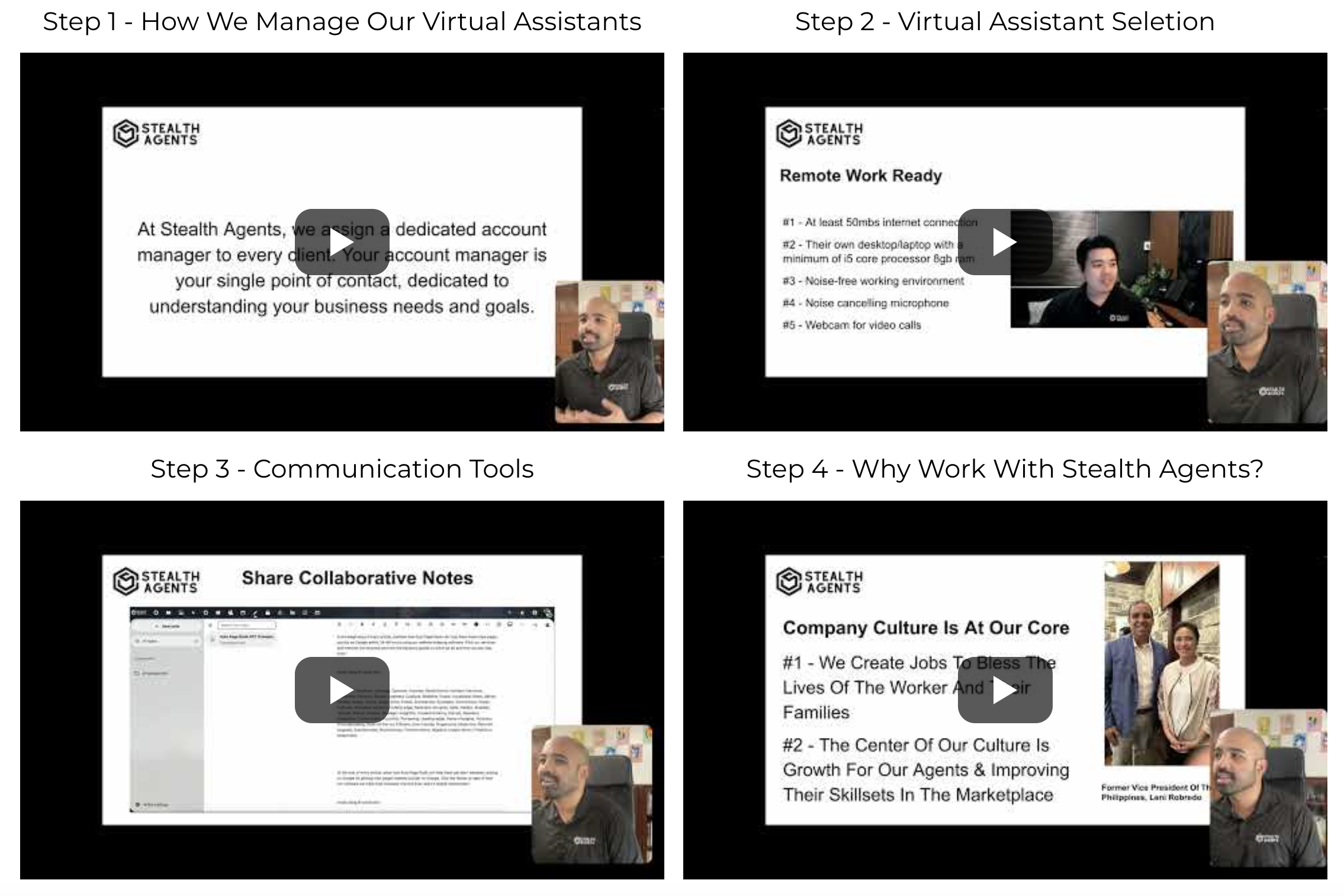Practical communication tools like Slack and Twist are essential for teams striving to stay connected and productive.
While both platforms serve as excellent channels for team collaboration, they cater to different communication styles and needs.
Slack is renowned for its real-time messaging capability, ideal for teams needing quick, interactive exchanges.
At the same time, Twist emphasizes a more organized, asynchronous communication approach, reducing the chaos of live chat.
This distinction makes Slack perfect for dynamic, fast-paced environments, whereas Twist suits teams that value thoughtful, uninterrupted work.
The choice between the two often depends on your team’s working style and preference for immediate interaction or structured conversation threads.
For businesses utilizing virtual assistant services, understanding these differences can enhance their workflow, optimize virtual assistant tasks, and effectively manage virtual assistant pricing strategies.
This insightful comparison has been meticulously created and curated by
What is Slack?
Slack is a powerful communication platform that facilitates seamless collaboration among team members in various organizations.
It is a centralized hub where messages, files, and tools can be easily accessed and organized, enhancing productivity and teamwork.
Users can create dedicated channels for specific projects or topics, ensuring that conversations remain focused and relevant.
Additionally, Slack integrates with a wide range of apps, allowing teams to streamline their workflow without switching between different platforms.
Its user-friendly interface and robust features make it a popular choice for businesses looking to improve their internal communication.
Key Features:
-
Channels: Slack allows users to create specific channels for different projects or teams, helping to organize conversations and keep discussions relevant. This structure ensures that information is easily accessible and reduces the clutter often seen in traditional email threads.
-
Direct Messaging: Users can send private messages to individuals or small groups, facilitating quick and confidential communication. This feature is ideal for one-on-one conversations or when sensitive information needs to be shared.
-
Integrations: Slack offers seamless integration with various external applications, such as Google Drive, Trello, and Zoom. This allows teams to access all necessary tools within a single platform, enhancing productivity by minimizing the need to switch between different applications.
-
Searchable History: All messages and files are archived and searchable, making it easy for users to retrieve past communications and documents. This feature ensures that valuable information is never lost and can be referenced whenever necessary.
-
Customizable Notifications: Users can tailor their settings to manage alerts based on personal preferences and priorities. This helps prevent distractions and keeps them focused on critical tasks.
Pros:
-
Enhanced Collaboration: Slack’s intuitive interface and comprehensive features foster better collaboration, ensuring teams can communicate effectively and efficiently. This leads to improved project management and timely task completion.
-
Flexibility and Scalability: Slack is suitable for businesses of all sizes and can be scaled to meet the needs of growing teams or enterprises. Its adaptability makes it an excellent choice for startups and large corporations alike.
-
Streamlined Workflows: By integrating with numerous third-party applications, Slack helps teams maintain streamlined workflows without juggling multiple platforms. This simplifies task management and boosts overall productivity.
-
Real-Time Communication: Slack’s real-time messaging capabilities ensure team members can quickly discuss and make prompt decisions. This immediacy is vital in fast-paced work environments where time is of the essence.
-
User-Friendly Design: Slack’s clean and intuitive design makes it easy for new users to get started and navigate the platform with minimal training. This accessibility contributes to a smoother onboarding process and quicker adoption across the organization.
Cons:
-
Information Overload: With a constant flow of messages and updates, users may experience information overload, making it challenging to keep track of meaningful discussions. This can lead to missed communications and decreased productivity.
-
Limited Storage: The free version of Slackrestrictsn message history and file storage, which can be a limitation for teams handling large volumes of data. This often necessitates upgrading to a paid plan for extended storage capabilities.
-
Dependency on Internet Connection: Slack requires a stable Internet connection to function effectively, which can be problematic in areas with poor connectivity. This reliance can disrupt communication during network outages.
-
Distraction Potential: The ease of communication can sometimes lead to excessive chatting, which can cause distractions and reduce focus on essential tasks. Teams must establish boundaries to ensure productivity is not compromised.
-
Learning Curve for Advanced Features: While basic features are user-friendly, some advanced functionalities may require a learning curve, particularly for non-technical users. Training may be necessary to fully leverage Slack’s capabilities.
What is Twist?
Twist organizes team conversations into threads, reducing noise and distractions common in real-time messaging platforms.
Unlike traditional chat apps, users can focus on specific topics without continuous notifications.
This promotes thoughtful communication, enhancing productivity by letting team members engage at their own pace.
The Twist is ideal for remote teams prioritizing deep work, offering a serene communication environment.
Its design prioritizes clarity and context, distinguishing it from instant messaging tools like Slack.
Key Features:
- Threaded conversations keep discussions organized, making it easy to follow and revisit specific topics efficiently.
- Supports asynchronous communication, enabling team members to contribute at their most productive times and reducing interruptions.
- Centralized channels focus on project-specific discussions, ensuring all relevant information is conveniently gathered and accessible.
- Searchable archives store every message and attachment, allowing quick retrieval of valuable information when needed.
- Integrates seamlessly with productivity tools, enhancing functionality and streamlining team workflows effectively.
Pros:
- Enhanced Focus: Twist minimizes the need for real-time responses, allowing team members to engage in deep work without frequent interruptions, boosting overall productivity.
- Improved Clarity: The threaded structure ensures that conversations remain on-topic and coherent, making it easier to track progress and decisions over time.
- Better Work-Life Balance: Asynchronous communication supports flexible work hours, enabling team members to participate without the pressure of being constantly online.
- Simplified Information Retrieval: The searchable archives feature lets users quickly locate past discussions and documents, saving time and effort.
- Encourages Thoughtful Responses: With no expectation for immediate replies, team members can take the time to craft well-considered and comprehensive responses.
Cons:
- Learning Curve: New users may find transitioning from real-time chat to threaded conversations challenging, requiring time to adjust to the new communication style.
- Delayed Communication: While asynchronous messaging reduces interruptions, it can lead to slower response times, which might hinder urgent decision-making.
- Limited Real-Time Interaction: Teams that rely heavily on instant, back-and-forth communication might find Twist less suitable for their needs.
- Less Spontaneity: TTwist’s structured nature can sometimes stifle spontaneous brainstorming and idea generation in real-time chats.
- Integration Limitations: Although Twist offers several integrations, it may not support all the tools a team relies on, potentially requiring additional workarounds.
Slack vs Twist: Detailed Features Comparison
1. Communication Style: Real-Time vs Asynchronous
In the ongoing Slack vs Twist discussion, communication style is a critical differentiator, with each platform offering unique benefits for various situations.
Slack excels in real-time messaging, providing instant connectivity for teams requiring fast, interactive dialogues. This is perfect for urgent updates and quick decision-making.
This immediacy enhances team agility and energizes collaborative efforts.
On the other hand, Twist embraces asynchronous communication, allowing team members to respond when it suits their schedule.
This minimizes disruptions and fosters more deliberate, well-considered exchanges.
This approach is particularly advantageous for teams engaged in deep, focused work, where the ability to reflect and respond thoughtfully is key.
Selecting the appropriate communication style hinges on understanding your team’s specific needs and the context of each interaction.
Whether immediate engagement or reflective dialogue is required, the chosen tool must know how to communicate effectively in different situations to effectively meet those demands.
2 . Organization: Channels vs Threads
When comparing Slack vs Twist, their methods of organizing conversations stand out.
Slack uses channels to group discussions on specific topics, projects, or teams, facilitating easy access to ongoing conversations.
Within these channels, messages flow continuously, sometimes leading to information overload.
Twist, on the other hand, organizes discussions into threads within each channel, making it easier to follow specific conversations without getting lost in a flood of unrelated messages.
This threaded approach helps maintain clarity and focus, which is particularly beneficial for remote teams dealing with complex projects.
3. Integrations: Extensive vs Selective
The Slack vs Twist comparison also extends to their integration capabilities.
Slack offers an extensive range of integrations with numerous third-party apps, allowing teams to connect all their tools in one place and automate various workflows.
This extensive integration ecosystem makes Slack highly adaptable to different business needs.
Twist offers fewer integrations but focuses on essential productivity tools, ensuring that the platform remains streamlined and user-friendly.
This selective approach can benefit teams that prefer simplicity and don’t require many integrated applications.
4. User Experience: Dynamic vs Serene Interface
In terms of user experience, Slack vs Twist presents a contrast between dynamic and serene interfaces.
Slack’s interface is vibrant and bustling, reflecting its real-time communication focus, which can energize users who thrive in fast-paced environments.
However, this can also be overwhelming for some, especially during high-volume communication.
Twist offers a calmer, more serene interface designed to minimize distractions and help users focus on specific tasks and conversations.
This tranquility appeals to users seeking a balanced, less intrusive digital workspace.
5. Unique Features: Customization vs Simplicity
Both platforms bring unique features to the Slack vs Twist discussion.
Slack excels at customization. It offers a plethora of options for notifications, themes, and bots, allowing users to tailor their experience to their personal preferences and workflows.
This customization can enhance productivity and satisfaction for power users.
Twist, in contrast, emphasizes simplicity and ease of use, providing an intuitive experience that requires minimal setup.
This makes Twist an excellent choice for teams that value straightforward, efficient communication without the need for extensive personalization.
How do Stealth Agents Choose Slack vs Twist?
At Stealth Agents, choosing between Slack and Twist hinges on a comprehensive understanding of team communication needs and project requirements.
The nature of the work and the preferred communication style are pivotal factors in the Slack vs. Twist evaluation.
Slack often emerges as the preferred choice for teams that require immediate, dynamic interactions due to its real-time messaging capabilities, fostering quick exchanges and agile responses.
Conversely, Twist is favored for its asynchronous communication model, which supports a more deliberate pace, reduces interruptions, and promotes deep work.
Recognizing the importance of selecting the best productivity tools for remote teams.
Also, Stealth Agents carefully assess how each platform aligns with the best Apps for remote team productivity.
This thoughtful approach ensures that the chosen tool meets current operational demands and strengthens overall collaboration and efficiency.
Ultimately, by weighing these considerations, Stealth Agents effectively harness the strengths of both platforms to optimize the performance of their remote teams.
Conclusion
In the Slack vs Twist discussion, it’s clear that choosing the right communication platform depends heavily on your team’s needs and working style.
Slack’s real-time messaging is perfect for teams that thrive on immediate interaction. It fosters a lively and responsive environment.
On the other hand, Twist’s focus on asynchronous communication allows for more thoughtful exchanges, which is ideal for teams that prioritize deep work.
Considering productivity vs hours worked, the right tool can help increase output without extending work hours, ensuring that teams work smarter, not harder.
Ultimately, Slack and Twist offer unique advantages that can effectively support various team dynamics, empowering teams to tailor their communication strategy to best suit their operational goals.












